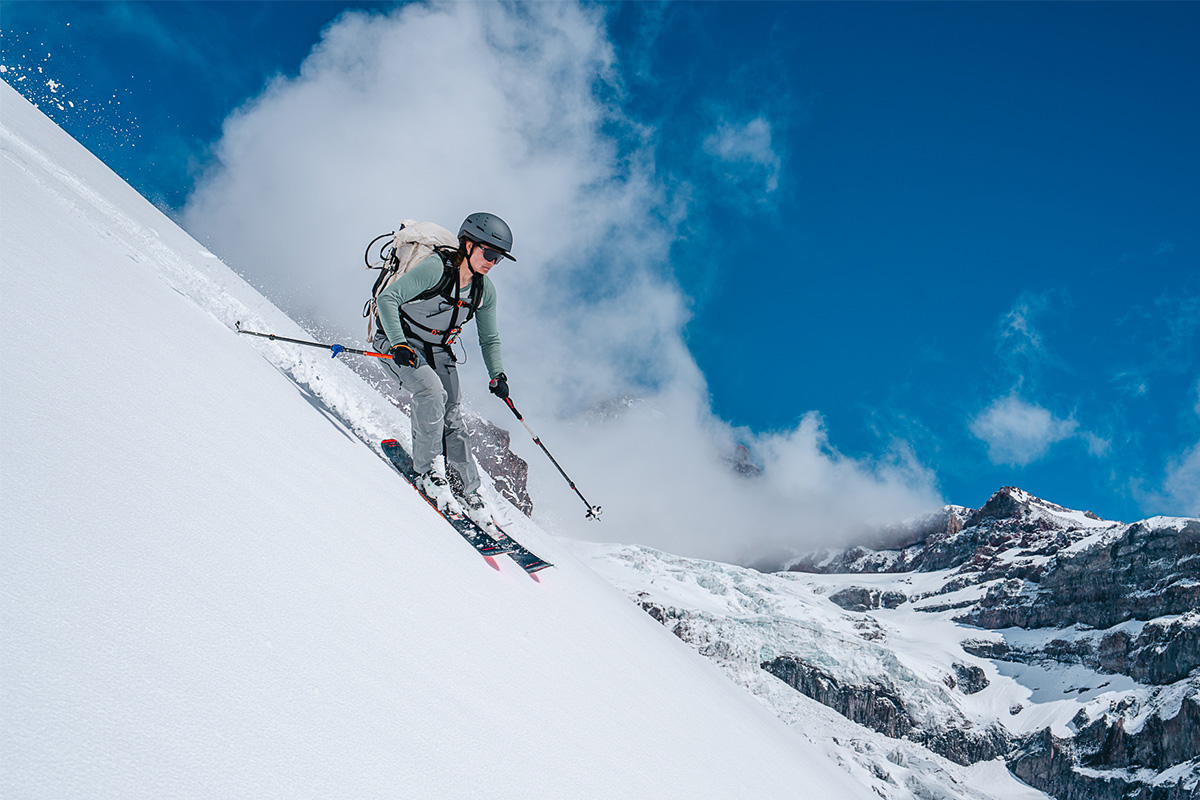
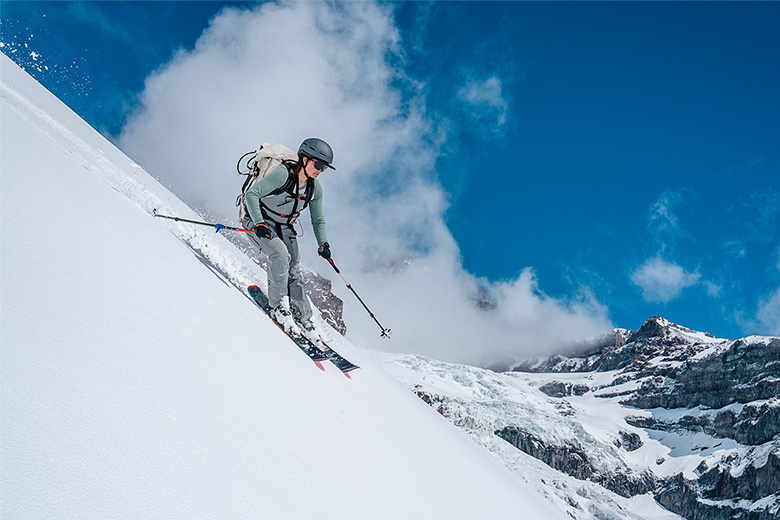
Nothing is more satisfying or adrenaline-inducing than slaying fresh powder in the heart of the backcountry, but you’ll need the right gear to accomplish your ski objectives. Our detailed backcountry skiing checklist below covers everything from critical touring equipment (skis, boots, poles, etc.) to avalanche safety gear, recommended clothing, and personal items and extras you won’t want to forget. For more information on each product category, many of the headings link to our detailed product round-ups, which are the result of years of testing. For all of our product recommendations in one place, see our ski gear reviews.
| Backcountry Ski Equipment | Avalanche Safety Gear | Backcountry Ski Clothing | Personal Items & Extras |
|---|---|---|---|
|
❒ Backcountry skis w/ touring bindings ❒ Backcountry ski boots ❒ Ski poles ❒ Climbing skins ❒ Ski goggles and/or sunglasses ❒ Ski helmet ❒ Ski backpack ❒ Navigation ❒ Headlamp
Accessories & Optional: ❒ Ski straps ❒ Repair kit ❒ Ski crampons ❒ Ice axe ❒ Satellite messenger ❒ Backcountry radios ❒ Skin wax ❒ Utility cord ❒ Emergency blanket or bivy
|
❒ Avalanche beacon ❒ Snow shovel ❒ Probe ❒ Slope meter ❒ Snow study kit
Optional: ❒ Snow saw ❒ Avalanche airbag pack |
❒ Baselayers ❒ Midlayer ❒ Down or synthetic jacket ❒ Hardshell or ski jacket ❒ Ski pants or bibs ❒ Ski gloves or mittens ❒ Ski socks
Accessories & Optional: ❒ Beanie or insulated headband ❒ Brimmed hat ❒ Liner gloves ❒ Balaclava or neck gaiter ❒ Extra socks |
❒ Bathroom kit or Wag Bags ❒ Hand sanitizer ❒ SPF-rated lip balm ❒ Sunscreen ❒ First aid kit ❒ Food ❒ Insulated water bottle(s) or bladder ❒ Thermos w/ hot beverage or soup ❒ GPS watch ❒ Camera ❒ Disposable hand warmers ❒ Whistle ❒ Compass ❒ Knife or multi-tool ❒ Extra batteries ❒ Lighter or waterproof matches ❒ Foam sit pad ❒ Notebook and pencil ❒ Personal medications ❒ ID ❒ Permit or park pass |
Editor's note: The table above provides a brief overview of what you'll need to get outside, but our full PDF version is printable and offers a more comprehensive breakdown of the necessities and nice-to-haves.
See Our Backcountry Ski Checklist PDF
When preparing for a trip into the backcountry, having your gear dialed is essential for your safety and enjoyment in the mountains. Whether you're headed out for a quick tour or embarking on a multi-day mission, you'll need the right skis, boots, bindings, skins, and other equipment for the job. Below is what we recommend bringing on every trip, along with a handful of optional items that may or may not be worth packing depending on your preferences and objective(s).
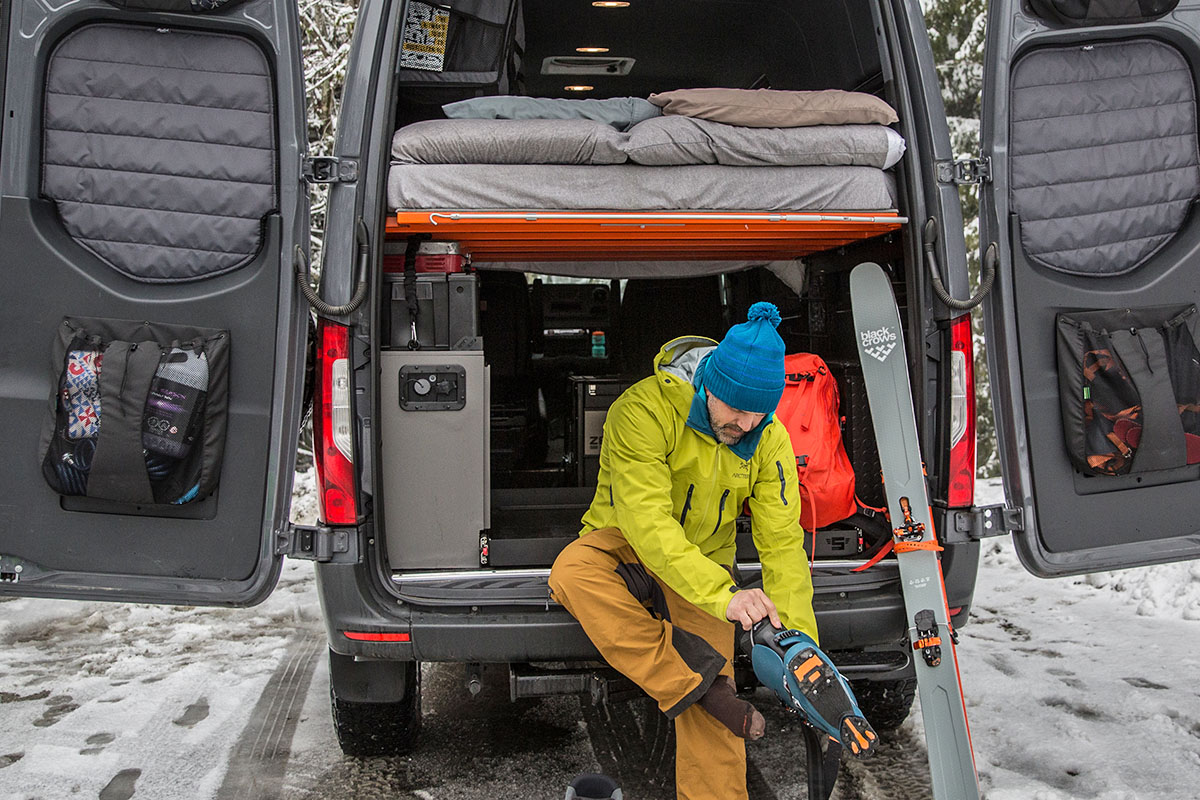
Our top pick: Blizzard Zero G 105 ($900)
What we like: Lightweight and efficient on the climb but fun and playful on the descent.
What we don’t: For big-mountain objectives, we prefer a burlier ski like the DPS Pagoda Tour.
*Editor's note: You'll need to mount your skis with tech or frame bindings, which allow your heel to rotate as you travel uphill (compared to downhill bindings, which lock your heel in place). We prefer modern tech bindings for their lighter and lower-profile build, and you can see a full list of our favorite options here.
Our top pick: Scarpa Maestrale RS ($949)
What we like: Impressive combination of uphill and downhill performance; comfortable and can be driven hard.
What we don’t: Not compatible with alpine bindings; the Atomic Hawx Ultra XTD 130 is a better hybrid choice for mixed resort and backcountry use.
Our top pick: Black Diamond Traverse ($115)
What we like: Dependable build, reasonably lightweight, and won't break the bank.
What we don’t: Doesn't include premium features like breakaway straps or BD's FlickLock Pro adjustment system—for that, we turn to their upgraded Razor Carbon Pro.
Our top pick: Pomoca Tour Pro ($230-$260)
What we like: Mohair/nylon blend offers a great balance of grip and glide; Pomoca's glue stays attached all day while releasing a bit more readily than other brands.
What we don’t: Not as durable as all-nylon skins like the Black Diamond Ascension.
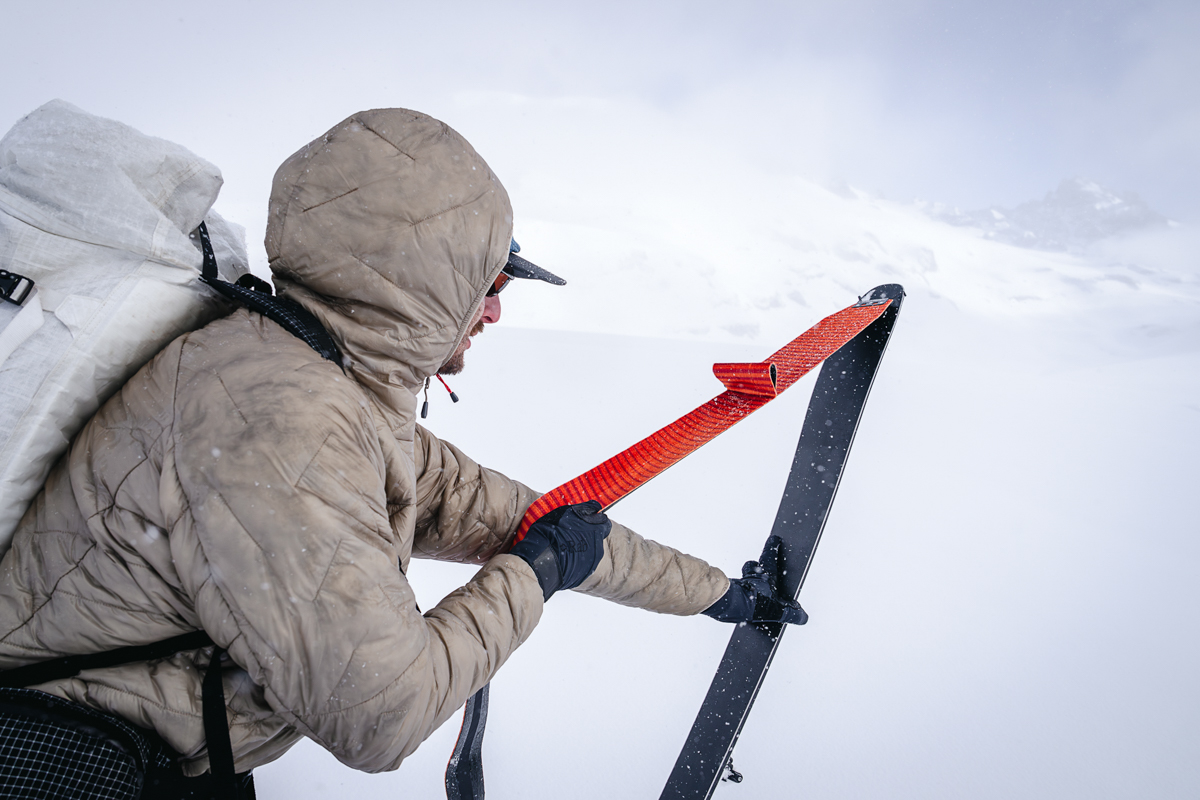
Our top pick: Julbo Lightyear ($320)
What we like: Anti-fogging system does a great job maximizing airflow; photochromic lens is nice for shifting conditions.
What we don’t: Only offered in one (large) frame size; a small step down in clarity compared to Smith's ChromaPop optics.
Our top pick: Movement 3Tech Alpi Honeycomb ($220)
What we like: Competitively light, low-profile, and triple-certified for alpine skiing, mountaineering/climbing, and biking.
What we don’t: Minimal padding isn't great for cold days or frequent resort riding.
Our top pick: Black Diamond Dawn Patrol 32 ($200)
What we like: Great all-day comfort and versatility; all the features we look for in a well-rounded pack.
What we don’t: For mountaineering or overnight objectives, you'll likely need something bigger (we like Black Diamond's Cirque 50).
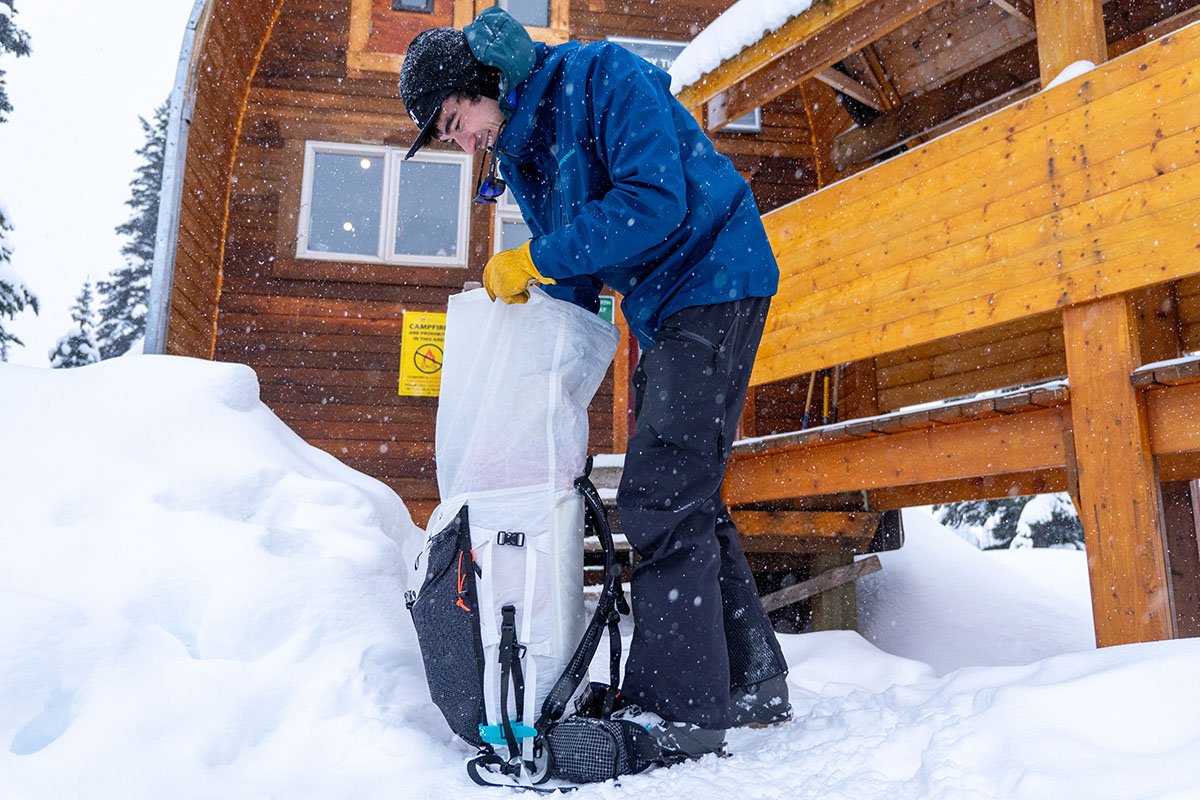
Our top pick: Gaia GPS (app)
What we like: Intuitive interface with the option to clearly highlight slope angle.
What we don’t: Requires a monthly subscription for advanced features (including slope angle) and offline access.
Our top pick: Petzl Actik Core ($85)
What we like: Long-lasting battery that can be swapped out for AAAs; bright and reliable.
What we don’t: Not the lightest or lowest-profile design; some users report problems with the strap and battery compartment, although we've had zero issues in testing.
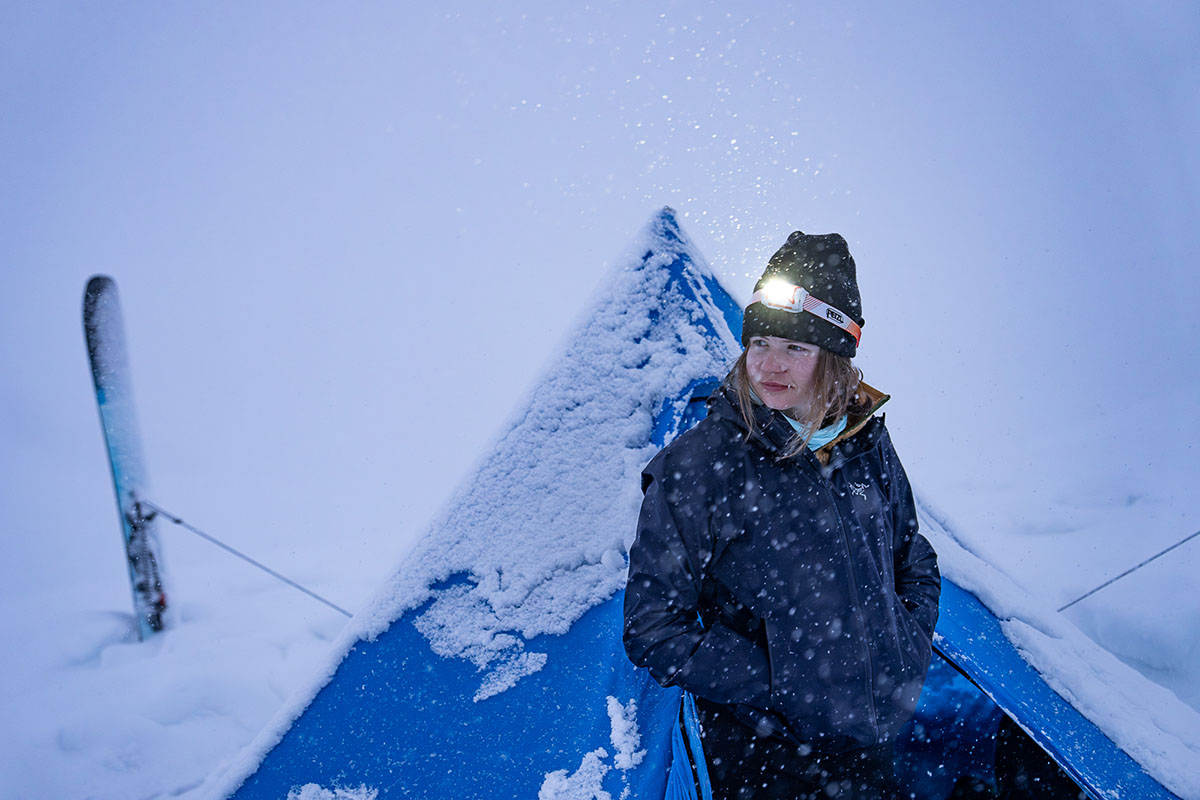
Avalanches are always a risk when traveling in snowy backcountry environments, and knowing how to recognize and respond to potential hazards is key to staying safe. In addition to the basics—beacon, shovel, and probe—we also always bring along a slope meter and snow study kit, as well as a compact saw for digging pits to analyze snowpack or building a makeshift shelter. And importantly, there's no substitute for receiving proper avalanche education and training, which we break down further in our section on avalanche safety below.
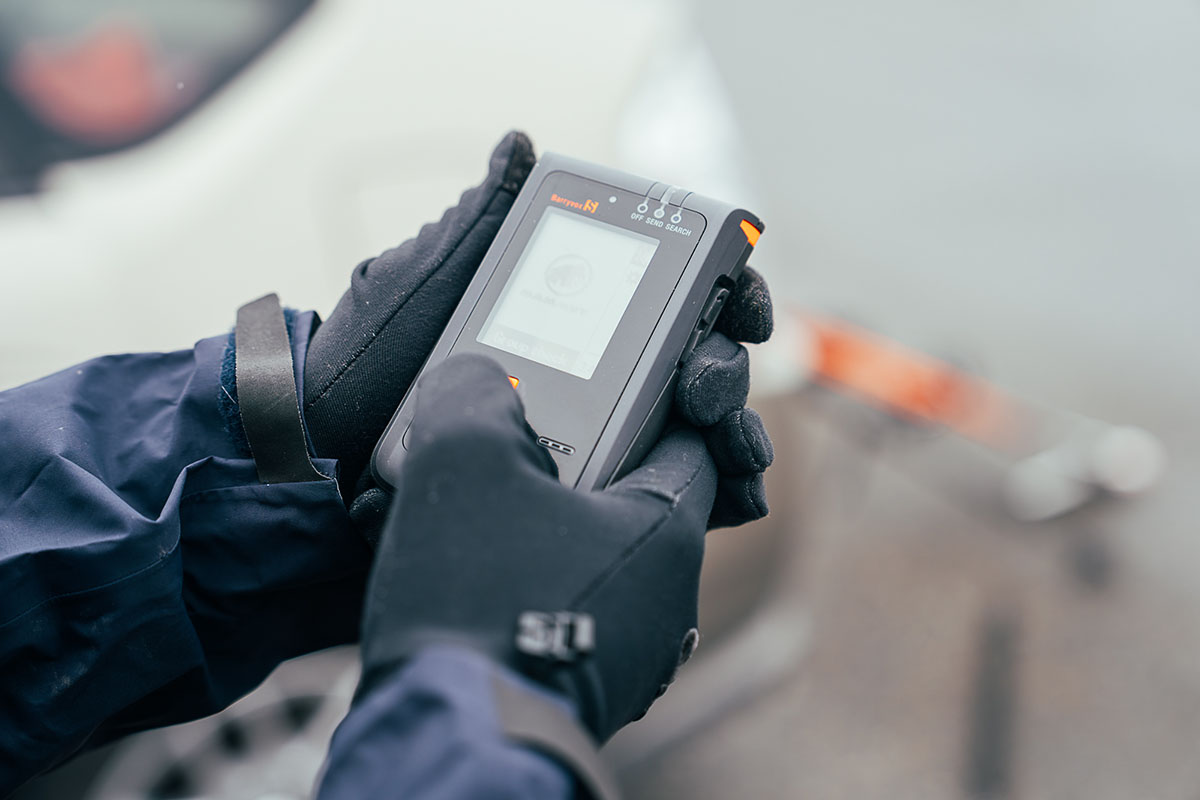
Our top pick: Backcountry Access Tracker3 ($350)
What we like: Easy to use, respectable battery life, and reasonably priced.
What we don’t: Simple interface may leave professionals wanting more.
Our top pick: Black Diamond Transfer ($65)
What we like: Sturdy and easy to disassemble for storage.
What we don’t: Spending up will get you a more comfortable handle and better packability.
Our top pick: Black Diamond QuickDraw Pro 240 ($70)
What we like: Lightweight, quick to deploy, and features distinct depth markings.
What we don’t: You can go slightly cheaper with BCA's Stealth 240.
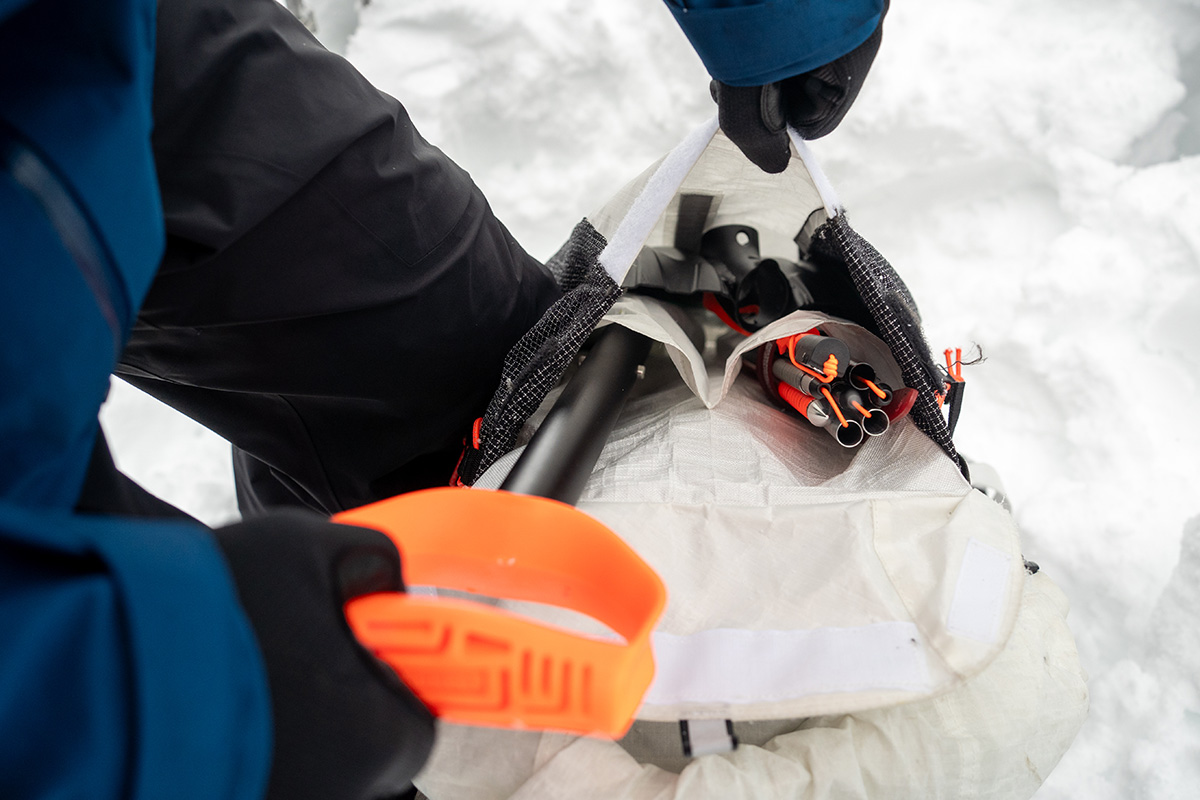
The ideal layering system depends on temperature and conditions, which can vary significantly throughout a day in the backcountry. For this reason, we always recommend wearing or packing several layers that you can add or shed as the weather shifts. On top of a moisture-wicking baselayer, we often wear a thin fleece midlayer for light insulation, a shell or ski jacket for weather protection, and a thicker down or synthetic jacket for transitions and hanging around camp. And don't forget about the smaller accessories, too: Items like ski socks, hats, neck gaiters, and gloves can go a long way toward trapping heat and keeping you comfortable in the mountains.
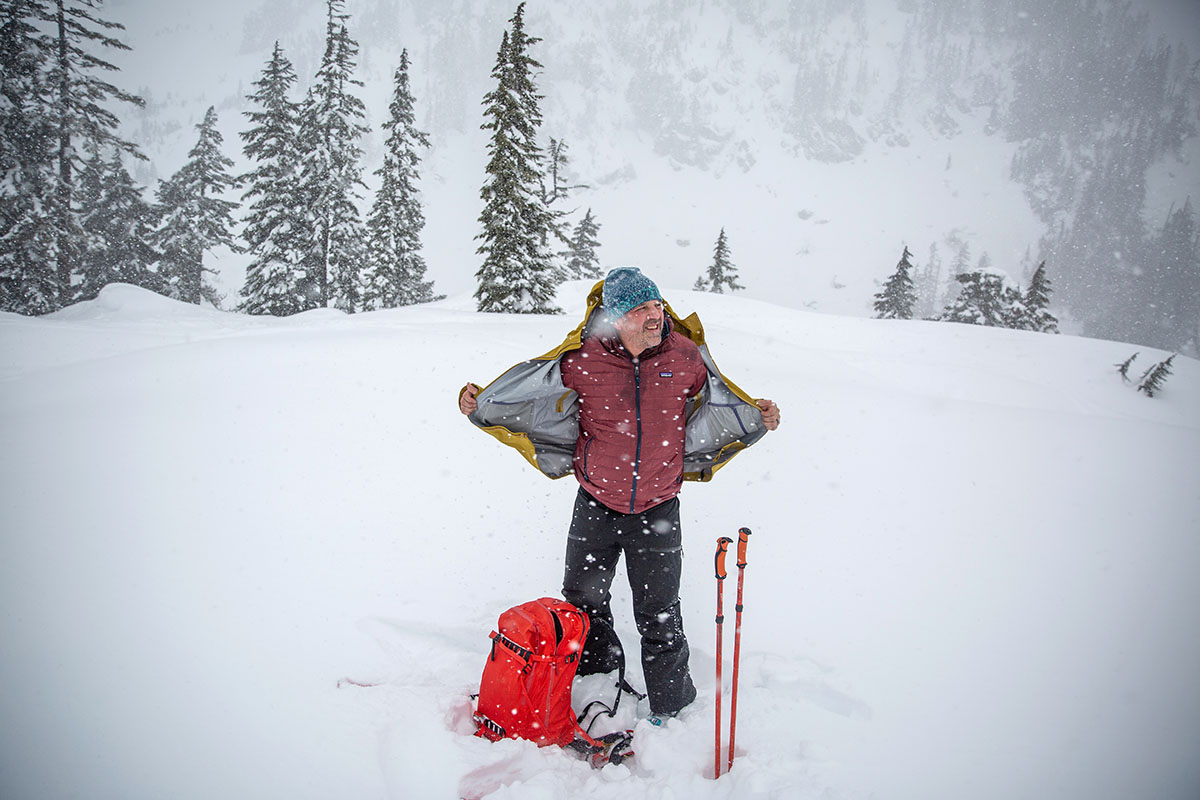
Our top pick: Smartwool Classic Thermal Merino 1/4 Zip ($120)
What we like: 100%-merino wool build is soft, warm, and highly odor-resistant.
What we don’t: For heart-pumping objectives in mild conditions, we turn to Smartwool's more breathable Intraknit Thermal Merino.
*Editor's note: We also recommend a quality baselayer for your bottom half, and a capri design like the Smartwool Intraknit Thermal Merino 3/4 Bottom keeps fabric clear of your ski boots.
Our top pick: Patagonia R1 Air Full-Zip Hoody ($179)
What we like: Purpose-built to trap warmth and dump heat—a great combination for touring.
What we don’t: Limited resistance to water and wind.
Our top pick: Arc'teryx Cerium Hoody ($400)
What we like: Respectably light without skimping on features; smart use of synthetic insulation in moisture-prone areas.
What we don’t: For added assurance in inclement weather, we turn to fully synthetic jackets that will continue insulating when wet.
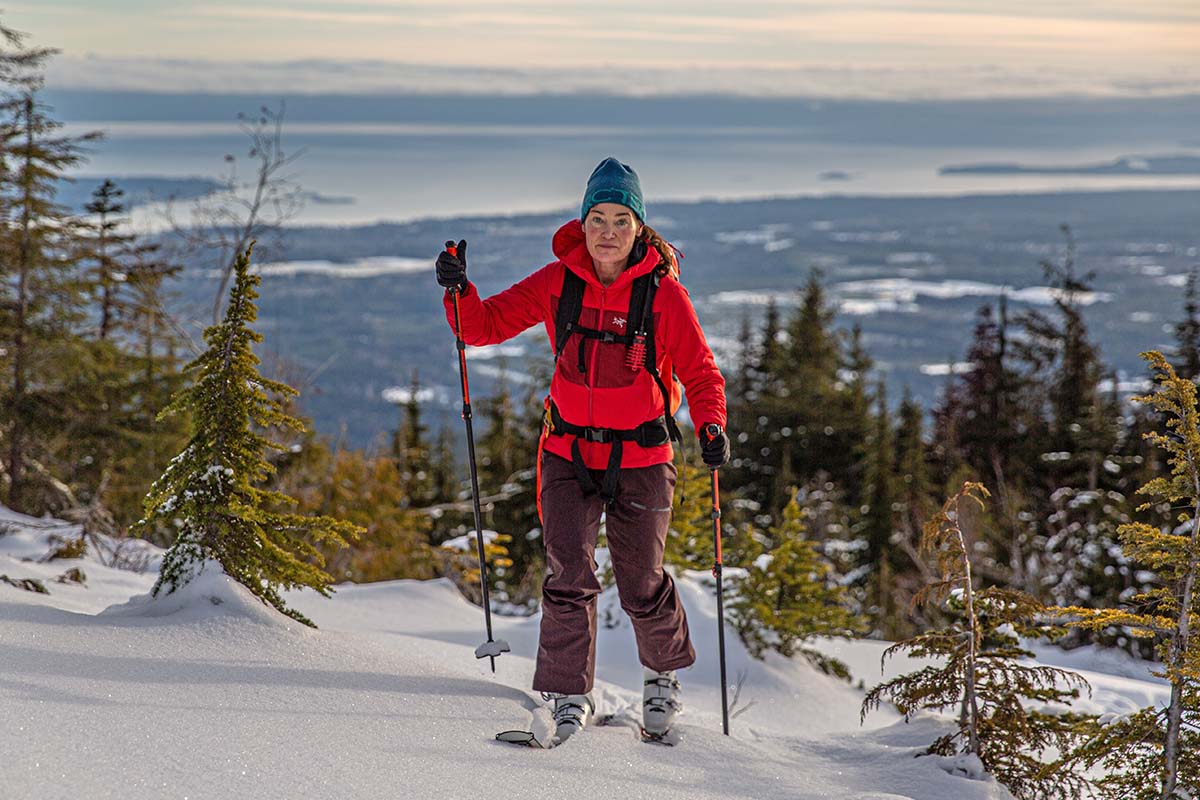
Our top pick: Outdoor Research Skytour AscentShell ($429)
What we like: AscentShell membrane stretches like a softshell, breathes well, and is fully waterproof.
What we don’t: A traditional, Gore-Tex-equipped hardshell like Arc'teryx's Beta AR is better suited for consistently wet conditions (but won't breathe as well).
Our top pick: Patagonia Stormstride Pant ($449)
What we like: Stretchy 3-layer design does a great job balancing protection and comfort.
What we don’t: Slim fit, expensive, and some may prefer the added coverage of bibs.
Our top pick: Flylow Ridge Glove ($55)
What we like: Great dexterity, supple out of the box, and affordably priced.
What we don’t: Those who get out in consistently wet conditions will want to upgrade to a fully waterproof design.
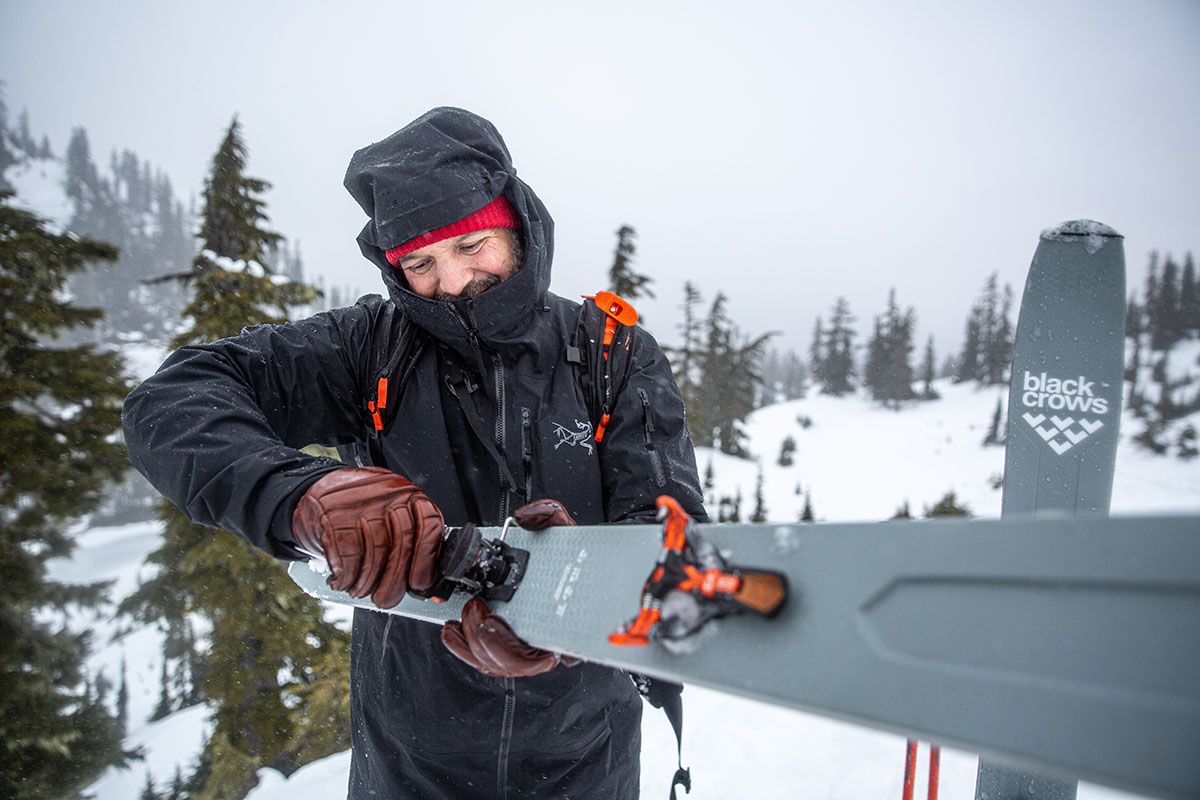
Our top pick: Smartwool Ski Targeted Cushion OTC ($30)
What we like: Strategic cushioning and mesh for comfort and breathability; great fit.
What we don’t: For best-in-class durability and a lifetime warranty, we turn to Darn Tough socks.
The gear above covers the essentials for ski equipment, clothing, and safety gear, but there are a handful of other item that we recommend taking for your comfort and safety in the backcountry. Some of these items (like snacks and water) are important for any day in the backcountry, but the others can be taken or left at home depending on your objective.
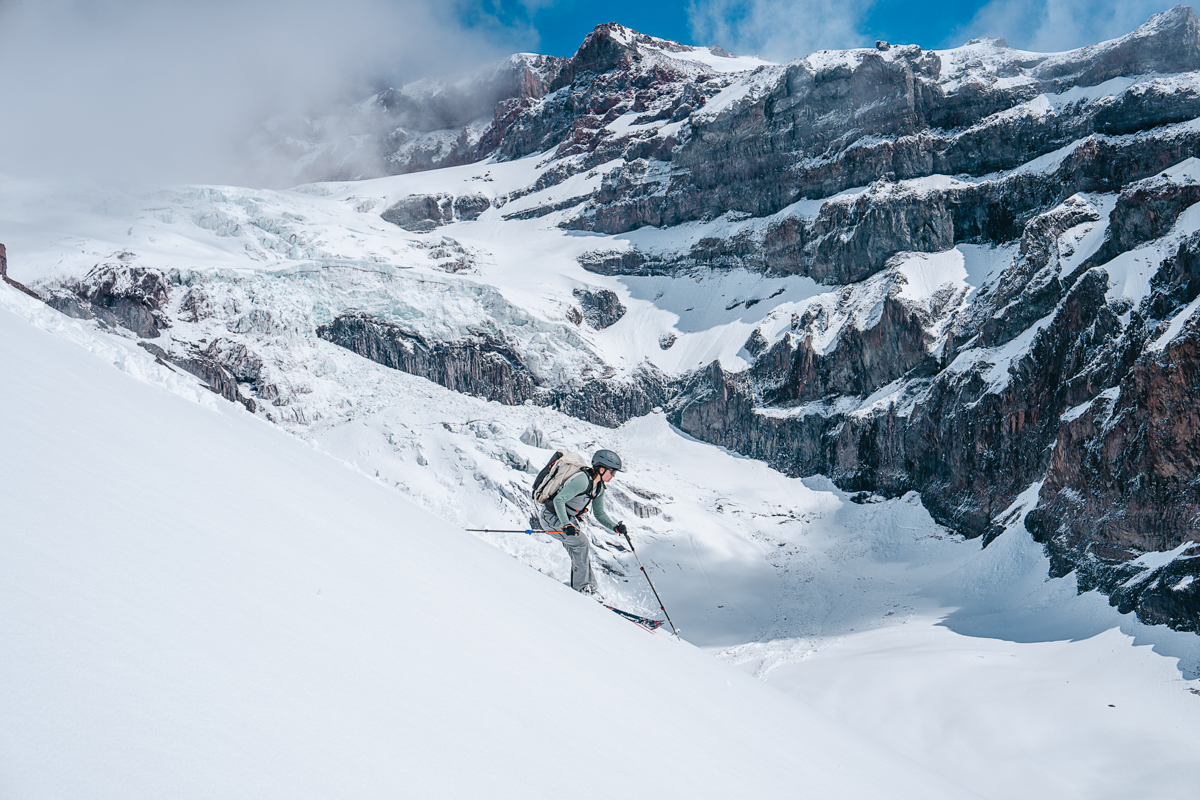
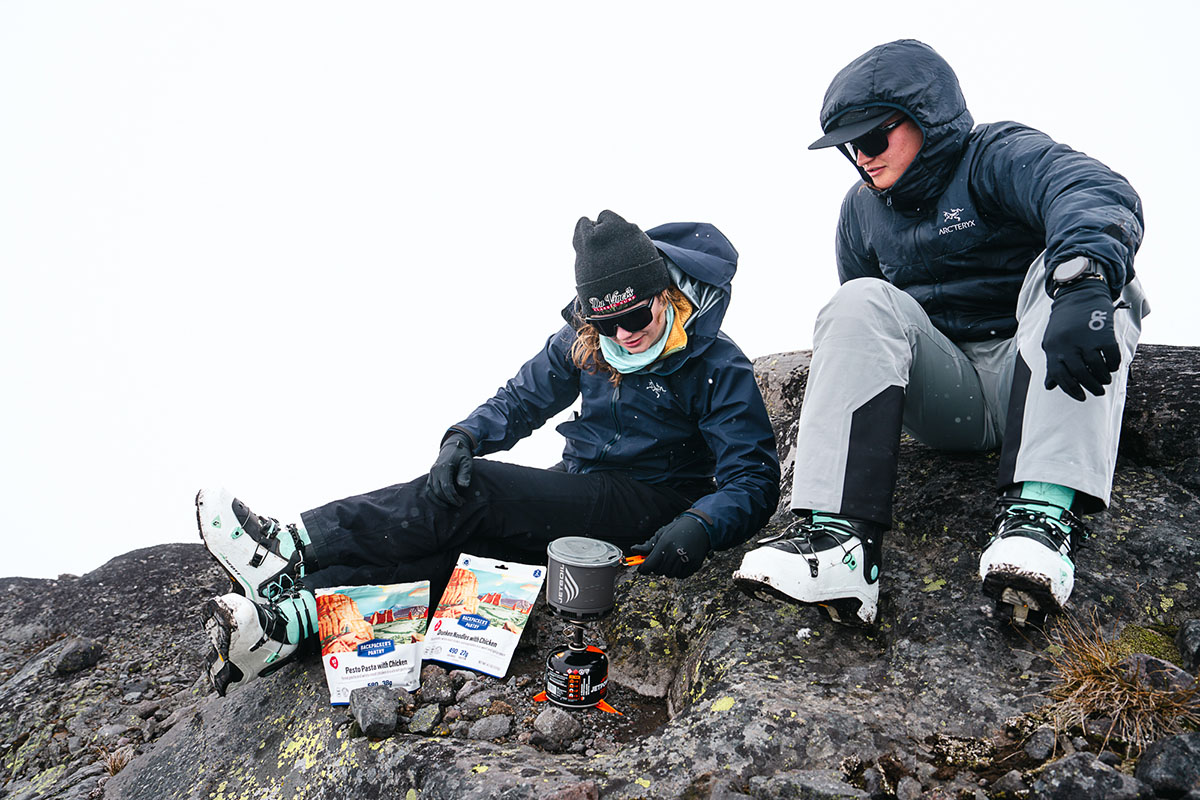
First and foremost, we always are in favor of buying at your local ski shop. It’s a great place to meet people and get information, learn about area trails, and support local businesses. If you do decide to buy online, there are a few standout options. Evo.com is a winter sports specialist that offers an extensive selection of backcountry ski gear, has a very helpful website in terms of specs and information, and has several brick-and-mortar stores scattered throughout the U.S.. Backcountry.com has perhaps the most varied collection of ski gear and offers free two-day shipping on orders of $50 of more, and Skimo Co has arguably the best selection of ski mountaineering and skimo racing gear, along with an extremely knowledgeable staff (and a retail location in Salt Lake). Finally, we do much of our outdoor gear shopping—for winter, summer, and everything in between—at REI Co-op, which has a 10% annual dividend for members and over 180 physical stores.
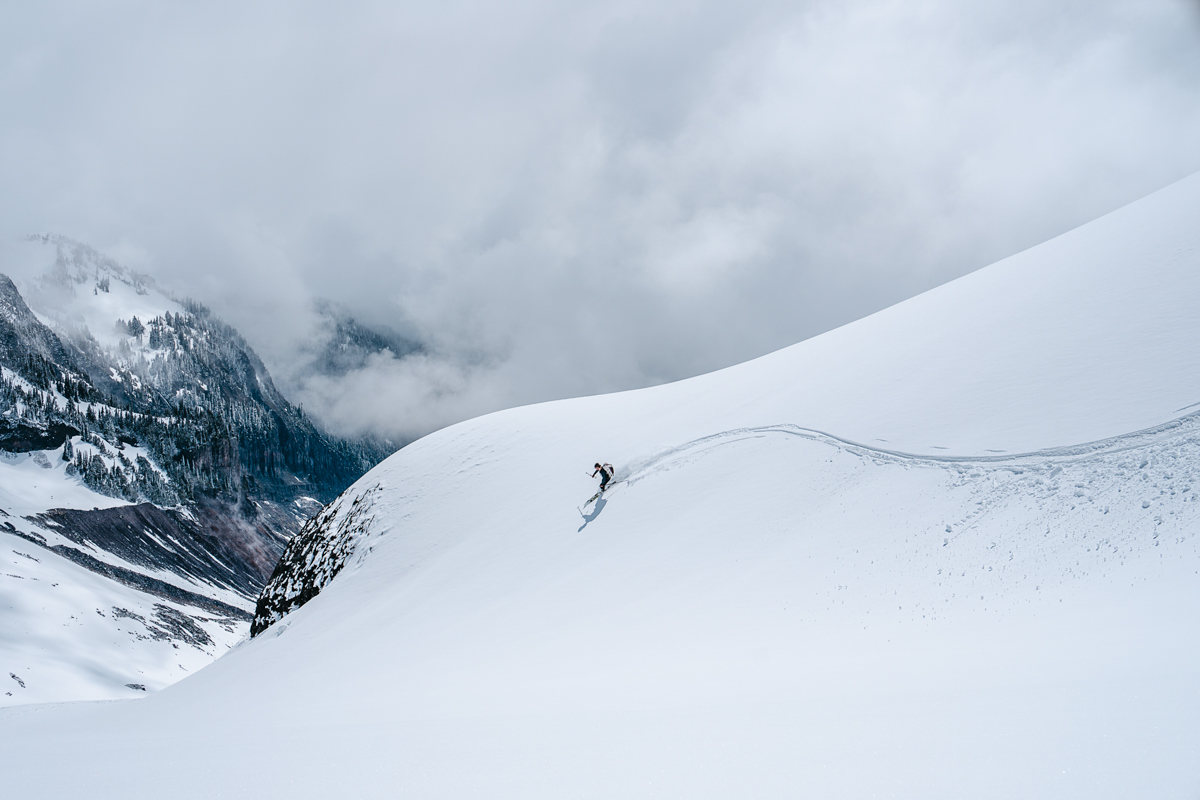
Even more important than avalanche gear is training, practice, and self-awareness. Winter can be a wonderful time to recreate, but it can also be very dangerous if you don’t have an understanding of current snowpack conditions and the slopes you plan to ski and traverse. Your local avalanche center (if you have one), Know Before You Go, and Backcountry Access are all great resources to get you started or to brush up on key concepts. Of course, it’s critical to get out in the snow and practice with your gear—we recommend practicing your skills with your core group of ski touring partners. In addition, we strongly advise taking an avalanche course (level 1 at the least) from a reputable organization like AIARE, which offers classes nationwide throughout the winter and early spring.
Back to Our Backcountry Skiing Checklist See Our Ski Gear Reviews